Registered with the Registrar of Newspapers for India under R.N.I 53640/91
Vol. XXVII No. 3, May 16-31, 2017
Rambling in our museums (5) … with N.S. Parthasarathy
A treat to the senses and the intellect
The Government Museum complex in Egmore is an enriching experience. Opened in 1851, it is the second oldest museum in the country and among the largest in Asia. It stands out among other such institutions for its ambience: a complex of red-coloured buildings in Indo-Saracenic style, of high heritage value by themselves, in an area of over 16 acres of greenery.
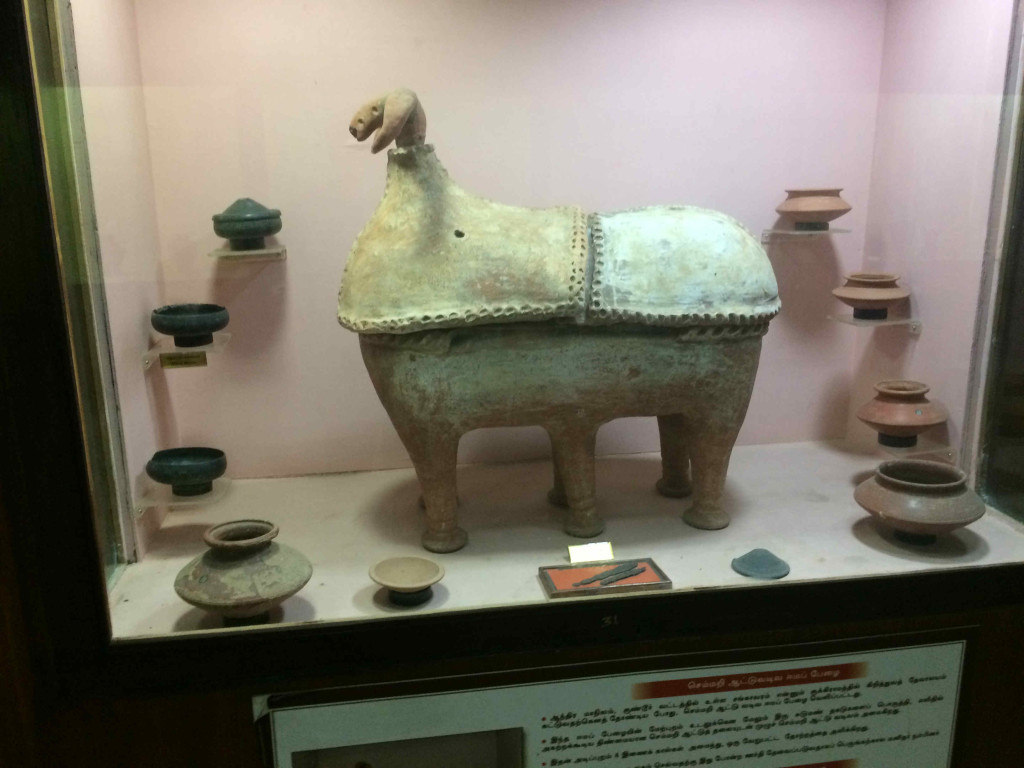 From Rome to Amaravati
From Rome to Amaravati
The Museum is not a single unit but a vast complex of not only several theme galleries but also of the Connemara Library, the Shakespearean-style Museum Theatre, the National Art Gallery and the Centenary Exhibition Hall. At one time, even the Zoo was located in this complex but was shifted later to People’s Park. Besides its massive collection of exhibits, the very buildings (building numbers 1, 2, the Art Gallery, the Theatre and the Library) are exhibits in themselves built 170 years ago. The exhibits are spread in six buildings containing 54 galleries.
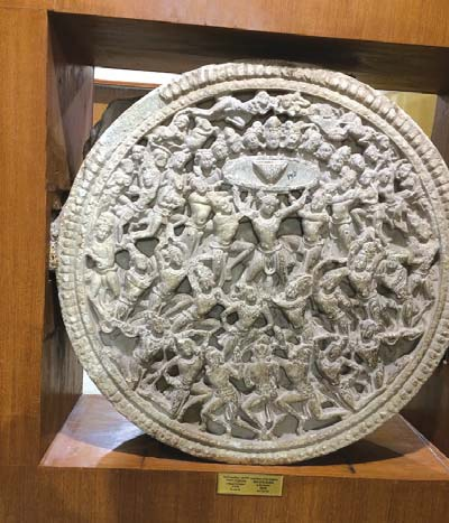 From Rome to Amaravati
From Rome to AmaravatiThe staggering range of art and artefacts of the Egmore Museum is a source of delight to connoisseurs of art, archaeologists, historians and research scholars but at the same time do not deny the opportunity for lay persons to enjoy them and wonder about what they see without having to know anything about art or history. It is the common person’s viewpoint that this article offers, necessarily it is also selective from a personal point of view.
The Main Block, the first of the six buildings of displays, is deceptively small at first sight, but once inside you find it sprawls over two lateral wings on the ground and first floors, an expanse of several thousand square feet. This is the largest of the six exhibition buildings. Sculptures of the Pallava period (600-850 CE), Hoysala-Kakatiya period (1100-1350 CE), later Chola period (1100-1350 CE), and Vijayanagar period (1350-1600 CE) are overpowering in their effect on the visitor. Massive monolithic stone images of Ganesha and two Dwarapalakas and the tranquillity of Dhakshinamurty, the teacher of all teachers, are the picks in this section. The intricacy of the images is noticeably finer in the Hoysala-Kakatiya images, perhaps facilitated by the softer stone used for carving. Greater ornamentation in design is evident in the Vijayanagar sculptures, perhaps representing the improving sculpting skills and technology in this later period. The reclining pose of Ranganatha with Sridevi and Bhudevi beside him is a bewitching three-piece composition.
The Amaravati gallery may be of topical interest as this name has acquired significance as the proposed capital of the new Andhra Pradesh. This gallery exhibits some of the finest specimens of sculpture, all in limestone, as opposed to granite, with intricate floral designs on stones that wear a fresh white look. A large sculpture of a boy and a man standing on a brick platform is striking for its realism and is indicative of the state of art and construction in 100 BCE. A wide range of Hindu and Jain sculptures are also on display in the adjoining section with the figure of Mahavira dominating the hall in a vivid portrayal of serenity and peace in stone. Noteworthy are the specimens of memorial stones in various shapes and on different themes, honouring women entering the funeral pyres of their dead husbands, warriors fallen in battle attaining Veeraswarga, martyrdom, and Jains fasting to death as recommended in their scriptures to attain salvation.
Objects of delight to children and adults alike in the natural gallery in this building are the suspended overhead exhibit of the skeleton of a hundred-foot whale and the life-size artificial, but convincing, electrified model of a dinosaur (tyromonosaurus), the monster tossing its head from side to side, like the MGM lion, accompanied by a chilling, reverberating roar from a high power stereo surround sound effect. Large crowds in this section even on a working day was no surprise.
Building Number 2 houses the Anthropology gallery. This building of original architecture, unlike Building Number 1, is in massive proportions, having wide, robust ornamental stairways to upper floors with floral plaster designs on the stone banisters. It houses ancient artefacts of a bygone era. Here can be seen what the Museum claims to be the largest collection of Roman antiquities outside Europe. They include two-handled jars in terracotta, semi-precious stones, jars and cups of various shapes, sizes and delicate motifs of animals and birds – all indicative of Tamil trade with Rome about 2,000 years ago. An ancient coin counting machine on display was very innovative. It is a wooden slate with several circular holes. Coins were spread all over the plate till they settled in the individual holes. Each batch has a fixed value. Human ingenuity is certainly not of recent origin.
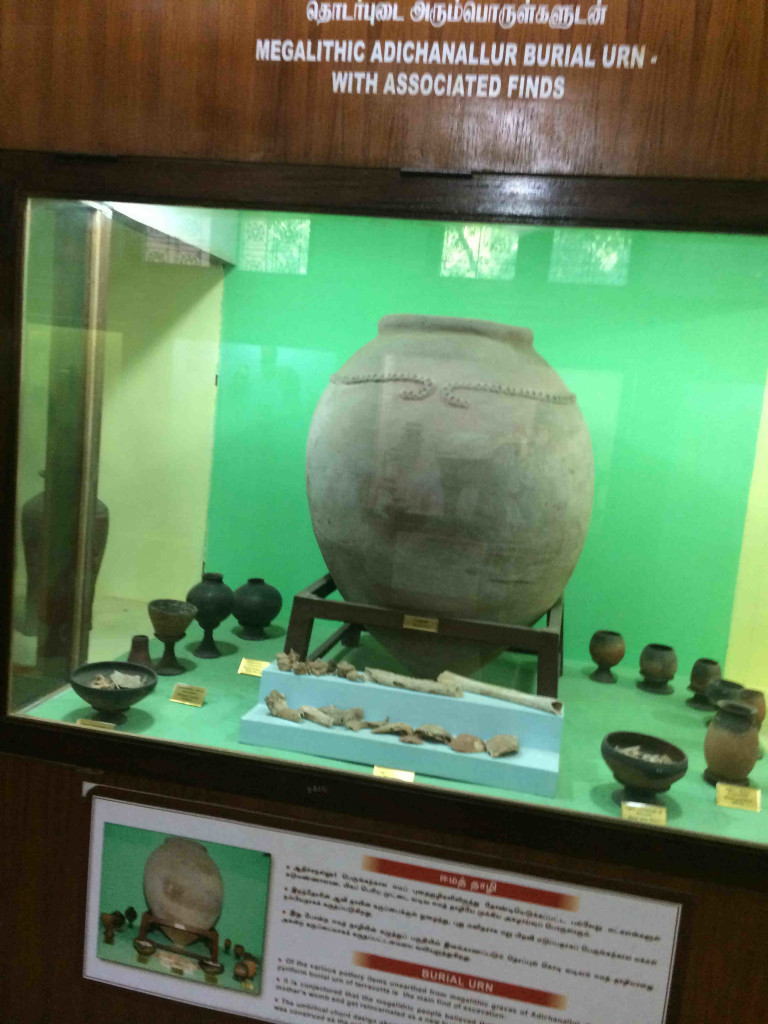
Adichanallur finds
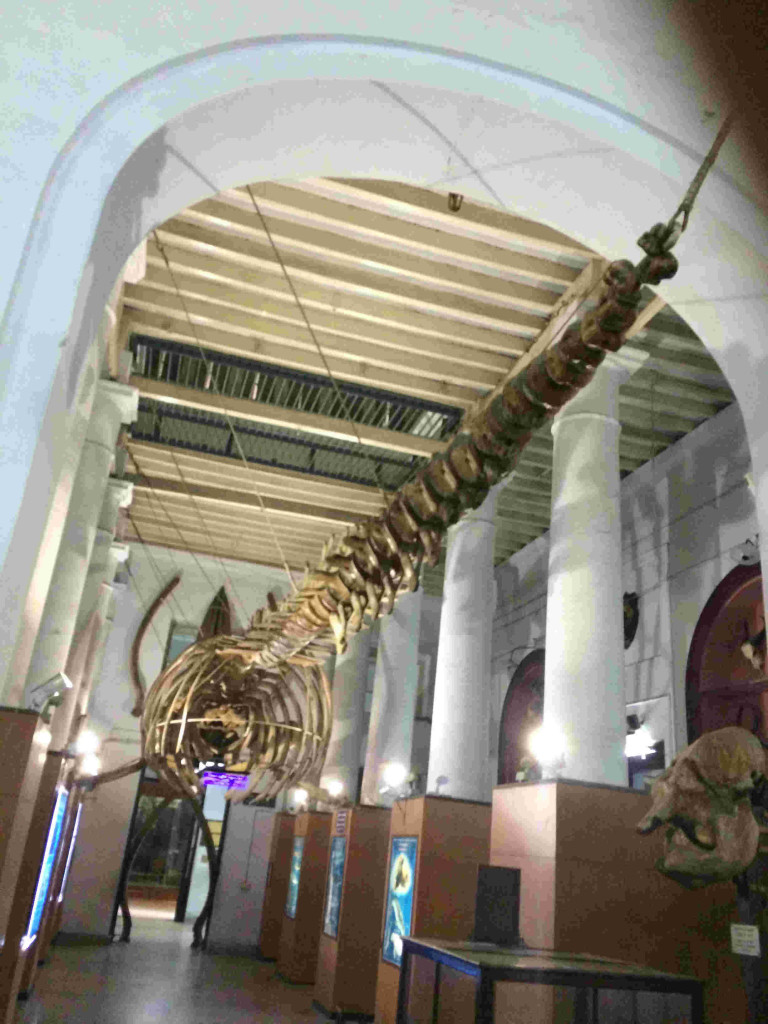
The skeleton of a whale
Most impressive in the Anthropology section is the large burial urn in terracotta dating to the megalithic age. It has a design of the umbilical cord around its neck, demonstrating the belief that the dead person re-incarnates as a new human being. How has such a large delicate piece in terracotta survived undamaged for over a thousand years is beyond comprehension. Seeing is believing
Building 3, a later structure, houses the bronze gallery, which is the best among all the galleries. Its specially lit and designed showcases for the exquisite exhibits make it most inviting. Their arrangement in a large hall stands out in sharp contrast to the exhibition standard in the other galleries. Hundreds of bronze figures in various sizes, belonging to the 9th to the 16th Centuries, of gods and goddesses and a galaxy of bronze statues of dozens of different poses of Nataraja in his celestial dance, all in the finest imaginable workmanship, make this exhibition an aesthetic and spiritual treat.
Building 4 is a present-day structure housing the children’s gallery. The museum for children in the complex houses several static exhibits such as galleries of dolls adorned with costumes of various nations and civilisations and also exhibits relating to science and technology. Of particular interest here is the electronic animated model of the atomic power plant at Kalpakkam.
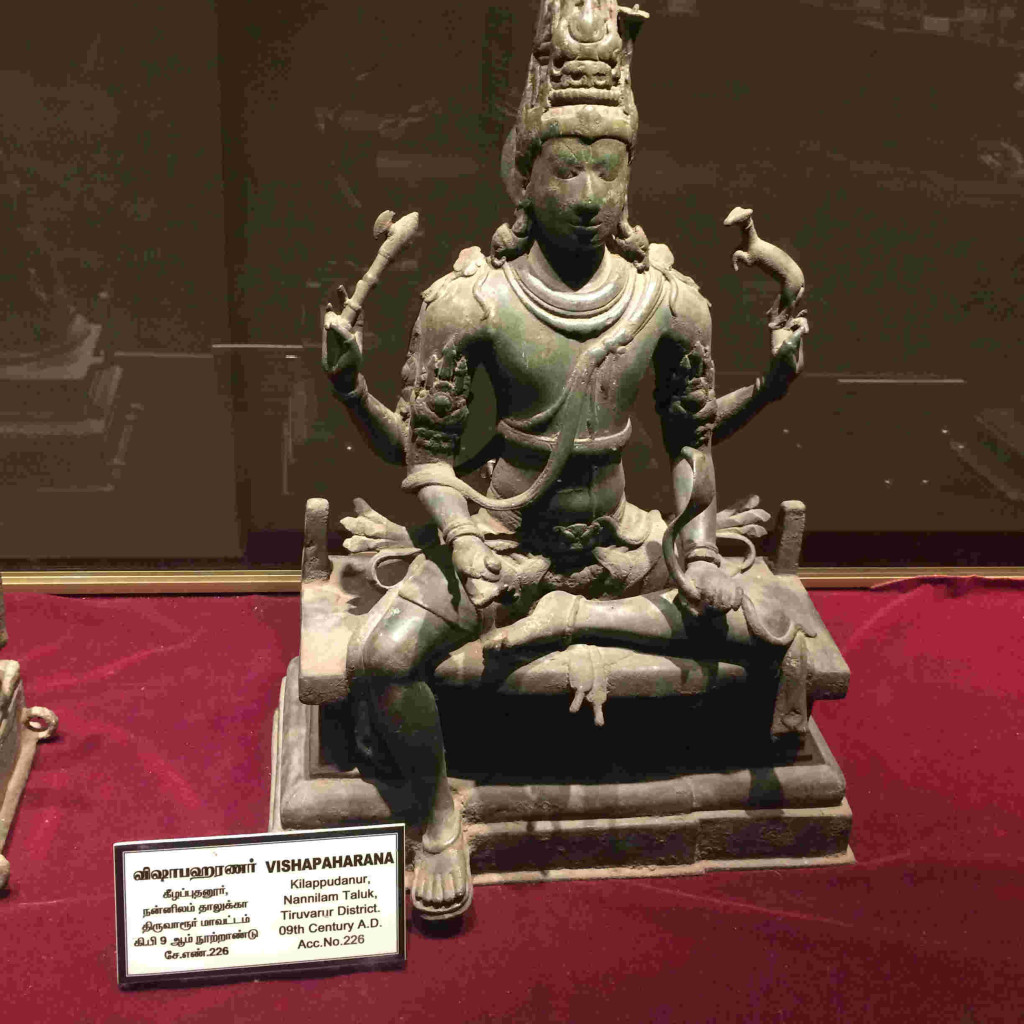
An exhibit in the Bronze Gallery
The National Art Gallery, the iconic heritage building, is under restoration and its exhibits have been shifted to the Contemporary Arts building. The National Art Gallery items include traditional paintings, Indian miniature artworks, paintings of Thanjavur and other antique and traditional paintings. Contemporary art includes portraits of British Governors and Ravi Varma’s paintings.
Particularly satisfying was the walk-through sculpture garden (with Thirthankara, Ganesha and Maha Vishnu sculptures). The open-air display of ancient stone sculptures surrounded by a garden could well have been the high water mark of the entire museum complex but for the fact that the surroundings were so poorly maintained, with un-cleared rubbish and plastic strewn all over.
Four of the buildings are air-conditioned either fully or partially. In the main building, windows are open, though with netting. The surrounding trees thankfully provide some protection against dust and noise. Many trees were lost in the last cyclone a couple of months ago reducing the dust protection. Rs. 10 crore has been sanctioned for a major restoration programme to be completed by the end of 2018. Horticulture, restoration of the heritage structures, adding an extra 4,000 sq. ft. to rearrange displays, modernising the 17 of the 54 galleries that need improvement are all part of the renovation plan. After the proposed restoration, the Egmore Museum could well stake its claim to be among the best in the East. We seem to be sitting on a gold mine, unaware of it.

